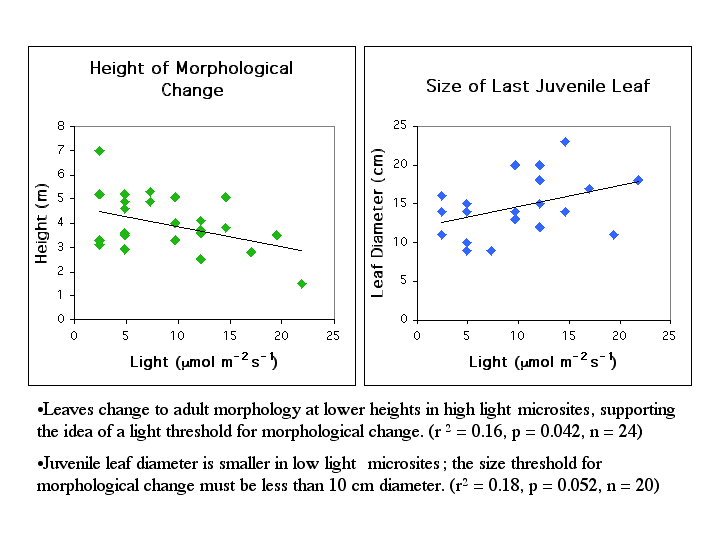Dynamic leaf morphology of Monstera tenuis
Light availability in the tropical forest
increases rapidly with height. There is also considerable horizontal
variation in light associated with canopy openings. Vines begin life
in the shaded understory and gain access to high light as they grow
up trees. Monstera tenuis is a vine that undergoes a dramatic change in leaf
morphology during its development. Its small, round juvenile leaves
grow closely pressed against its support tree trunk. As the vine
grows vertically, the leaves become larger, but at some point the
leaves become very large and dissected and are held away from the
host tree trunk on stout petioles. The juvenile leaf morphology is
well-suited for diffuse light capture while the adult morphology
enhances exposure to direct light. Light availability and a threshold
juvenile leaf size have been hypothesized to influence this dramatic
morphological change. We measured the height of morphological change
and leaf diameter of the last leaf to not change morphology for 24
individuals growing over a range of canopy openness. Diffuse light
intensity was measured with a light sensor to estimate light
availability to each plant. We found that the change in morphology
occurred at a lower height in habitats with more available light and
that the size of the last juvenile leaf increased with light
availability. These results are consistent with the hypothesis that
there is a threshold of available light necessary to induce
morphological change.
